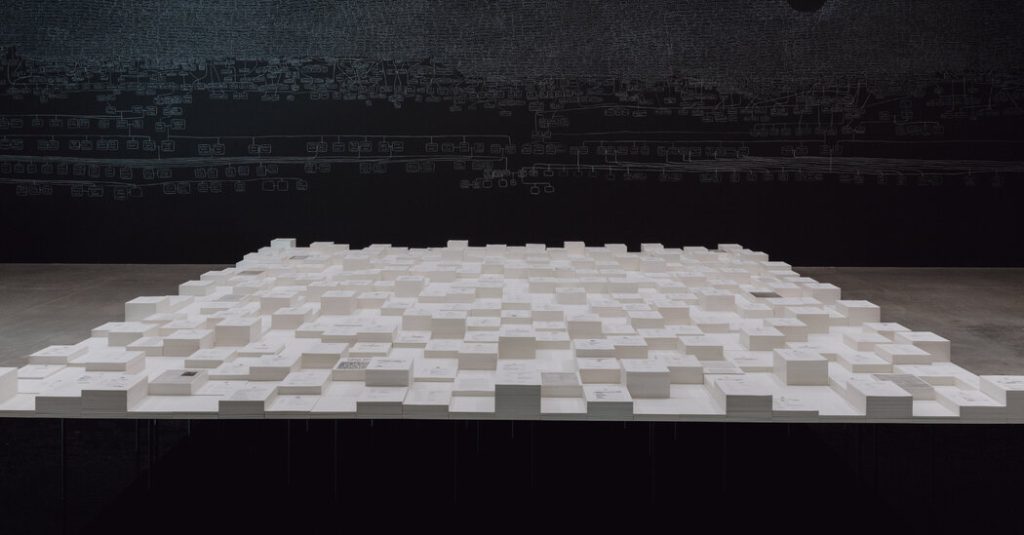Archie Moore, an Indigenous Australian artist, won the top prize at the Venice Biennale for his installation “kith and kin,” which features a monumental family tree drawn in chalk on the walls and ceiling of the Australia Pavilion. The tree includes 3,484 names and symbolizes a lineage that stretches back 65,000 years. In the center of the room is a table covered with documents related to the deaths of Indigenous Australians in police custody. Critics praised Moore’s installation for its aesthetic appeal, lyricism, and its evocation of shared loss for obscured histories.
The jury chair of this year’s Biennale, Julia Bryan-Wilson, lauded Moore’s work as a “mournful archive” that stands out for its aesthetic qualities and its ability to invoke past traumas. The installation has been described as captivating, with a hand-drawn family tree that is intentionally difficult to decipher, highlighting the interconnectedness of all human beings. Moore emphasized the importance of caring for all living things in his acceptance speech, emphasizing the concept of unity and shared responsibility towards the future.
In addition to Moore’s win, the Mataaho Collective, a group of Maori women from New Zealand, received the Golden Lion for their installation that references a traditional Maori mat used during ceremonies. The jury praised the collective for creating a luminous and symbolic space that evokes birth and renewal. The Silver Lion for the most promising young artist in the main exhibition was awarded to Karimah Ashadu for her work “Machine Boys,” which depicts illegal taxi drivers in Lagos, Nigeria.
The Venice Biennale, now in its 60th edition, was founded in 1895 as a global exhibition of contemporary art. The event takes place every two years and features individual country pavilions showcasing their own shows, with some exhibitions held in unconventional venues such as office blocks and prisons. This year’s central exhibition, curated by Adriano Pedrosa, features work by hundreds of artists, many of whom are migrants or from Indigenous communities. The Biennale, which opened to the public after a week of previews, will run until November 24th.
Moore’s win at the Venice Biennale marks a significant achievement for Indigenous Australian art and highlights the importance of showcasing diverse voices and histories in the international art world. The success of his installation reflects a growing recognition of Indigenous artists and their contributions to contemporary art. The Biennale continues to be a platform for artists from around the world to share their work and engage with a global audience, fostering dialogue and understanding across cultures and communities. The event serves as a celebration of creativity, innovation, and the power of art to transcend boundaries and connect people from diverse backgrounds.


